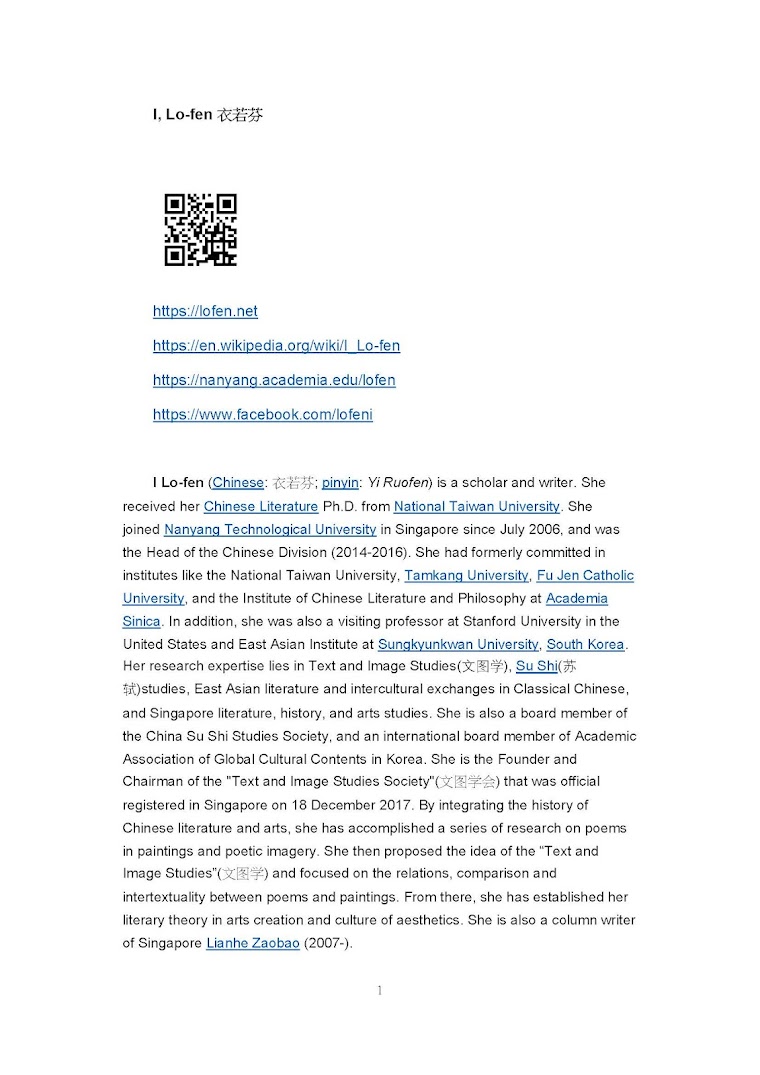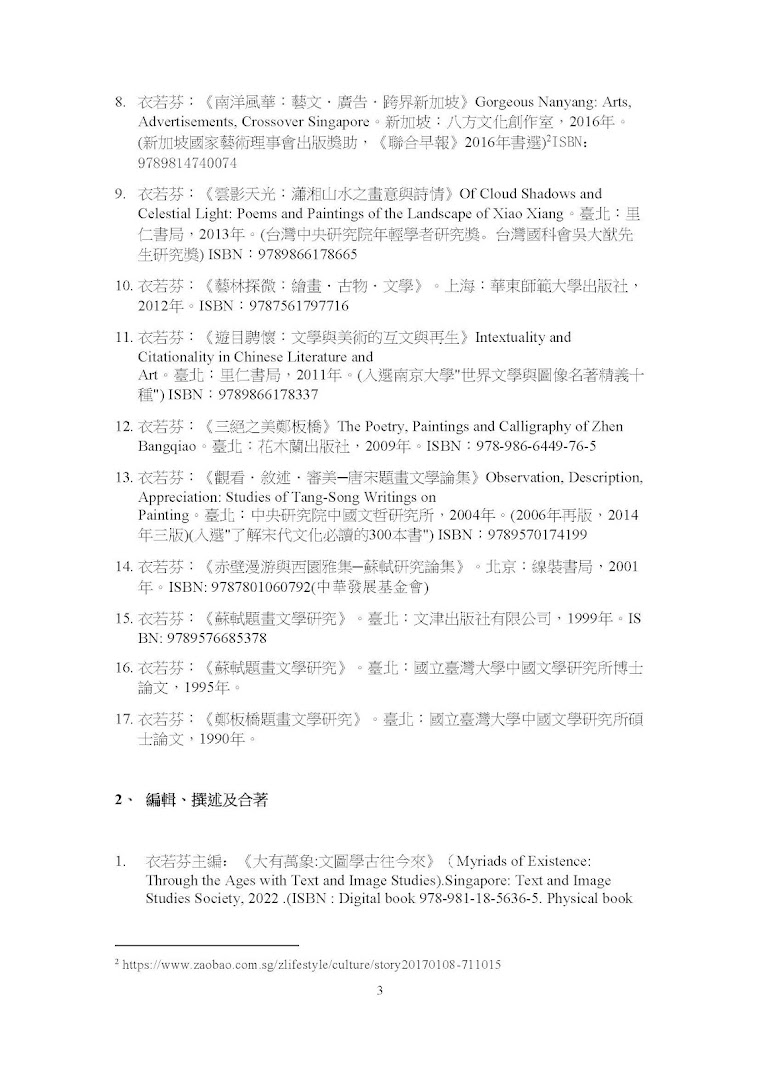4月2日,同一天签了两本书的合同。一本《AIGC文图学:人类3.0时代的生产力》,将在北京出版。一本《第一次遇见苏东坡》,将在上海出版。
两本书的写作目的和性质截然不同。《AIGC文图学》是8月新学期的新开课程参考书,用文图学的方法论和视角来谈人工智能生成内容(AI Generated
Content)。包括如何使用人工智能助手,下指令自动生成文字、图像、音频和视频,对生成的文本进行评价。这些AI生成的文本,已经逐渐渗透进我们的日常生活,影响职业技能、伦理道德、产权法规、乃至国际秩序等等。
《第一次遇见苏东坡》是临时接的写作任务,不在今年的规划中。带着部分自传回忆,我把自己的人生历程,结合与苏东坡的十次相遇,受启发的体验及感悟,通过讲述经典的苏东坡作品,呈现每一次遇见苏东坡的新鲜。有时两本书在同一天各写一部分,于是我陷入既溢满“昨日重现”的情怀,苦辣酸甜,冷暖自知;又条理分明,严守逻辑推演的批判思维。
跳进游泳池,滑动双臂和双腿。长时间伏案写作,造成全身的酸疼,只有在水里稍稍可以缓解。我偶尔一直闭气,脑子里穿插蹦跃者纷乱的思绪,几乎像是忘了呼吸。等到本能地冲破窒息抬起头来,看见泳池周围的椰子树,才又深吸一口气,潜入水中。让自己像机器一样的工作着,但是疲惫和焦躁让我意识到,自己毕竟是个人。
如同去年在新加坡美术馆,看了展览“Proof of
Personhood: Identity and Authenticity in the Face of Artificial Intelligence”(人格的证明:面对人工智能的身份和真实性),有观众在墙上贴了便条纸张说:“怎么证明我是人?我哭,我感到我的身体,我饿。”
怎么证明你是人类?现在很多网站要求我们通过辨识图像、拉动图块、计算数字,来证明自己是人。AI时代,我们越来越难以厘清真实和虚拟;是“人类大脑”还是“人工大脑”也越来越难以二分,也许以后AI更多介入人们,区别的问题会不会就变得无所谓了呢?
1956年,在达特茅斯会议(Dartmouth
Summer Research Project on Artificial Intelligence)上,约翰·麦卡锡(John
McCarthy, 1927-2011)首次提出了“Artificial Intelligence(AI,人工智能)”这个词,标志着AI作为一个独立研究领域的诞生。1980年代的专家系统和1990年代的深度学习机制推动了进展缓慢,几经停顿的AI研究。
2011年苹果手机推出语音助手Siri,可以语音回应用户的提问。2014年,开始有简单的聊天机器人协助文字输出。隔年《腾讯财经》便将AI使用于新闻报道。2016年,谷歌的AlphaGo战胜世界围棋冠军李世乭,你可能会想:训练AI下围棋对我有什么用?
同样在2016年,北京清华大学开发可以创作古典诗的机器人“薇薇”。2017年,人类历史上第一部由人工智能微软小冰生成的汉语白话诗集《阳光失了玻璃窗》出版。你可能会想:原以为人工智能是帮我们处理“动手”的事情,比如烧饭洗衣、打扫卫生。现在,我还是自己烧饭洗、打扫卫生,AI竟然“动脑”,吟风弄月,当起诗人来了。
2022年11月智能聊天机器人ChatGPT公诸于世,马上吸引了全球的关注。短短两个月,用户就达到一亿,打破在此之前,花了九个月达到一亿用户的TiK
ToK。
AI来了,作家怎么办?读者又能怎么读?4月19日下午3点半,欢迎到南洋理工大学的地标建筑The
Hive,听知名作家马家辉教授和我,一起来聊聊我们的经验和思考。
2024年4月13日,新加坡《联合早报》“上善若水”专栏
On April 2nd, I
signed contracts for two books on the same day. One is titled “Text and Image Studies on AIGC: The Productivity in the Age of
Humanity 3.0,” which will be published in Beijing. The other is “The First Encounter with Su Dongpo,” to be published in Shanghai.
The purposes and
natures of these two books are distinctly different. ' Text and Image Studies
on AIGC ' is a reference book for a new course beginning in the August
semester, discussing Artificial Intelligence Generated Content (AIGC) from the
perspective of text and image studies. It covers how to use AI assistants to
automatically generate text, images, audio, and video, and how to evaluate the
generated content. This AI-generated content has increasingly permeated our
daily lives, affecting professional skills, ethics, property laws, and even
international order.
'The First
Encounter with Su Dongpo' was a writing task I took on temporarily, not planned
for this year. Incorporating autobiographical memories, I narrate my life
journey intertwined with ten encounters with Su Dongpo, the inspirations and
insights gained, and the freshness of each encounter through his classic works.
Sometimes, I work on both books in a single day, caught between a
nostalgia-filled 'yesterday' and a critically logical mindset.
Diving into the
swimming pool, moving my arms and legs, helps alleviate the soreness from long
hours of writing. Occasionally, I hold my breath amidst the jumbled thoughts in
my mind, almost forgetting to breathe until instinctively breaking the surface for
air. Seeing the coconut trees around the pool, I take a deep breath and dive
back in. Working mechanically, the fatigue and irritability remind me that I
am, after all, human.
Like last year at
the Singapore Art Museum during the 'Proof of Personhood: Identity and
Authenticity in the Face of Artificial Intelligence' exhibit, a note on the
wall read, 'How do I prove I'm human? I cry, I feel my body, I get hungry.'
How do you prove
you're human? Nowadays, many websites ask us to identify images, move sliders,
and calculate numbers to prove our humanity. In the AI era, distinguishing
between reality and virtuality, and between 'human brain' and 'artificial
brain' becomes increasingly challenging. Perhaps as AI further integrates into
our lives, these distinctions will become irrelevant.
In 1956, at the
Dartmouth Conference, John McCarthy first coined 'Artificial Intelligence,'
marking the birth of AI as an independent field of study. The development of
expert systems in the 1980s and deep learning mechanisms in the 1990s slowly
advanced AI research, which had seen several halts.
In 2011, Apple
introduced Siri, a voice assistant responsive to user queries. By 2014, simple
chatbots began assisting with text output. The following year, 'Tencent
Finance' started using AI in news reporting. In 2016, Google's AlphaGo defeated
the world Go champion Lee Sedol. You might wonder, what use do I have for
training an AI to play Go?
Also in 2016,
Tsinghua University in Beijing developed a robot named 'Weiwei' capable of
composing classical poetry. In 2017, the first Chinese vernacular poetry
collection generated by Microsoft's AI 'Xiaoice(Xiaobing)' was published. You might think, I expected AI to handle manual
tasks like cooking and cleaning. Now, AI is engaging in creative tasks,
composing poetry and becoming a poet.
In November 2022,
the intelligent chatbot ChatGPT was released, quickly drawing global attention.
Within just two months, it reached 100 million users, surpassing the nine
months it took TiK ToK to reach the same milestone.
AI is here, so
what should writers do? How should readers engage? On April 19th at 3:30 PM,
join me and the renowned writer Professor MA Ka Fai at The Hive, a landmark
building at Nanyang Technological University, to discuss our experiences and
thoughts.
April 13, 2024,
'Shang Shan Ruo Shui' (The highest
goodness is like water)column, Lianhe
Zaobao, Singapore."













